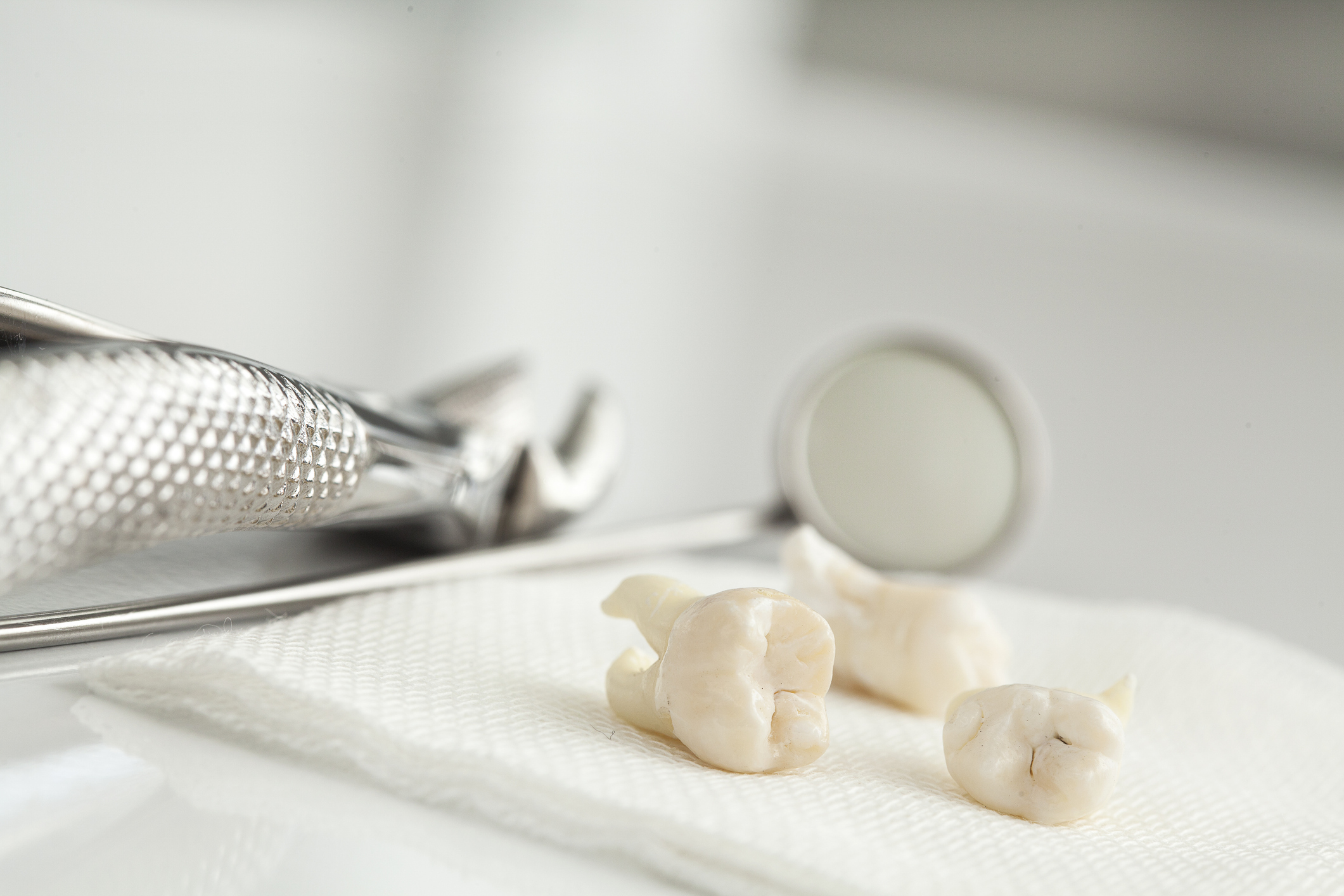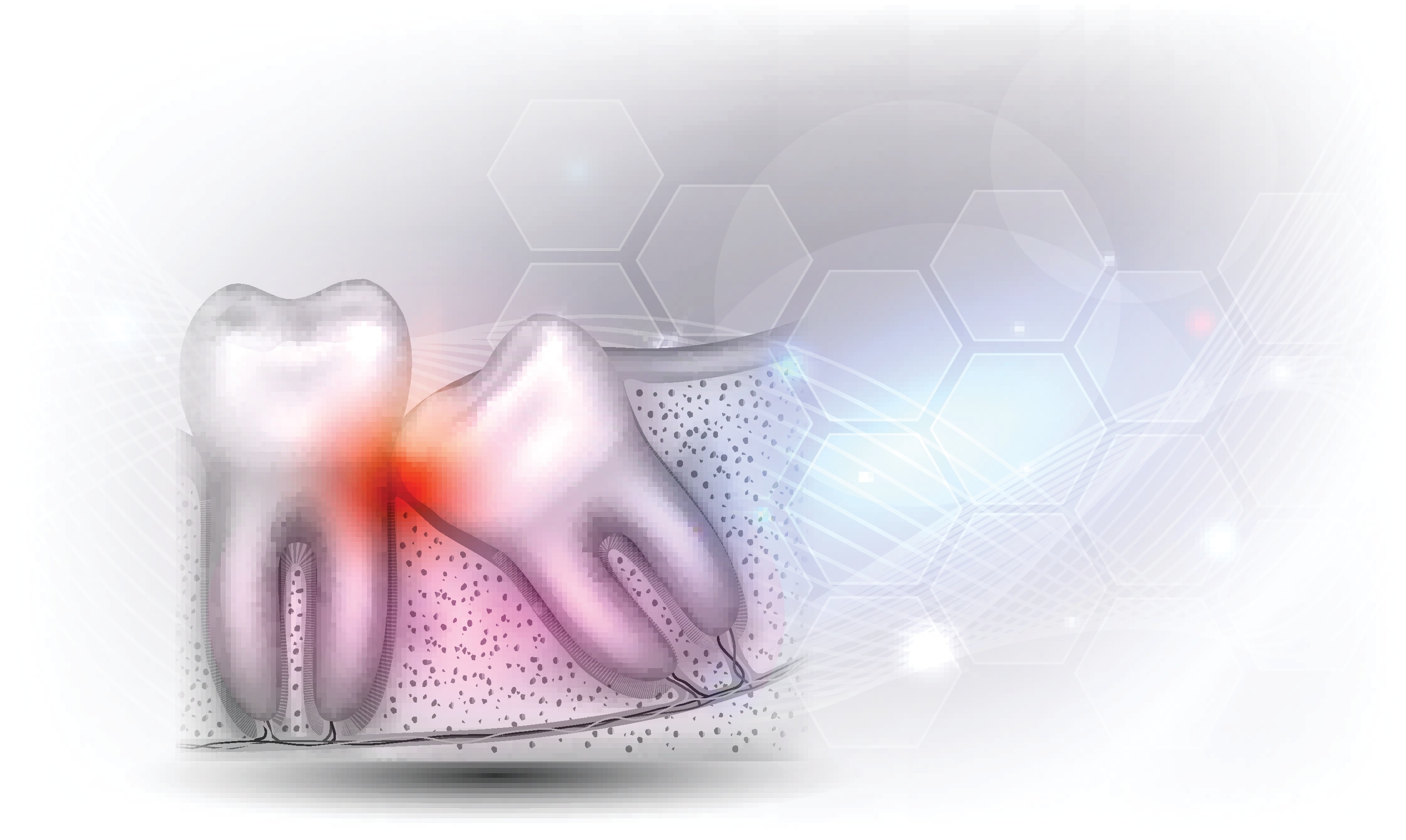Most humans have 32 teeth and every single one of them is precious, but there may come a time where a tooth needs to be extracted because of trauma, caries (tooth decay) or advanced periodontal disease. Since replacing an extracted tooth as soon as possible is recommended, most patients focus on their replacement options which range from partial denture to dental bridge to dental implant. While that is an important decision, there is a more immediate concern at extraction, and that is socket preservation (also called alveolar ridge preservation).
What is Socket Preservation and Why is it Needed?
Socket preservation is a surgical procedure and form of bone grafting that helps preserve and protect the strip of bone, called the alveolar ridge, that surrounds the roots of teeth. The moment a tooth is lost, the body recognizes that the tooth is no longer there and starts a process of dissolving the bone in that location, reshaping and re-contouring the jawbone.
“Whether due to caries, trauma or advanced periodontal disease, tooth extraction and subsequent healing of the socket commonly result in osseous deformities of the alveolar ridge, including reduced height and reduced width of the residual ridge,” wrote Dr. Tassos Irinakis, director of graduate periodontics and implant surgery at the University of British Columbia in a peer-reviewed research paper.
Bone Loss Happens Fast After a Tooth Extraction
Bone loss after a tooth extraction can happen fast, resulting in an estimated 30 to 60 percent loss in bone volume within six months.
Dr. Irinakis cites a study, using subtraction radiography, that showed the width of the alveolar ridge decreasing on average after tooth extraction from 12 mm to 5.9 mm with two-thirds of the reduction within three months. Taking the risk of letting the socket mend on its own leads to two problems, according to Dr. Irinakis: “It creates an esthetic problem in the fabrication of an implant-supported restoration or a conventional prosthesis; and it may make the placement of an implant challenging if not unfeasible.”
How Socket Preservation is Accomplished
CDEWorld says “the maintenance of the ridge can be the difference between implant success and failure”.
For that very reason, socket preservation is typically completed at the time of extraction.
Steps for socket preservation may include:
· After removal of the tooth, gum is elevated away from the bone.
· The socket is thoroughly cleansed, sometimes with an antibiotic agent.
· A barrier membrane is fastened to the gum.
· The socket is then packed with bone grafting material.
· The wound is then closed over the barrier membrane.
“Socket preservation not only prevents the empty tooth socket from decaying but also creates a stronger support system for dental implants,” said Dr. Charles M. Repa, DDS, Northwest Oral & Maxillofacial Surgery.
Socket preservation not only protects the missing tooth socket from bone erosion but the procedure can also correct any existing deformity in the alveolar ridge. The bone graft can be done with the patient’s own bone, usually taken from a healthy area of the jaw, or from the hip or tibia. Synthetic material can also be used or even donated human bone from a tissue bank.
Recovery and Healing from Socket Preservation
Depending on your individual needs, the bone usually will be allowed to heal for about three to four months before implants can be placed. Though, in some cases, the implant can be placed at the same time the ridge is modified.
Typical socket preservation recovery and healing looks like:
· Initial angiogenesis (1 to 4 days): New blood vessels form, allowing the delivery of oxygen and nutrients to the bone’s tissues.
· New bone formation: (3 to 4 weeks): At the end of this period, the barrier membrane is removed unless it is a dissolvable membrane.
· Bone growth and reorganization (1 month to 4 months)
Socket preservation is an important procedure that can prevent bone loss and teeth from shifting, protect your aesthetics such as facial symmetry, and prepare you for tooth replacement, especially dental implants.
Contact Northwest Oral & Maxillofacial Surgery today to find out about how our board-certified surgeons can answer your questions about socket preservation.
References
https://www.texasoralsurgery.com/procedures/
https://www.texasoralsurgery.com/procedures/bone-grafting-2/
https://pubmed.ncbi.nlm.nih.gov/18713258/
http://www.cda-adc.ca/jcda/vol-72/issue-10/917.pdf
https://cdeworld.com/ebooks/download/socket-preservation-for-the-general-practitioner

.png)





.png)
